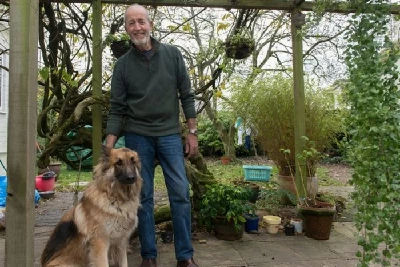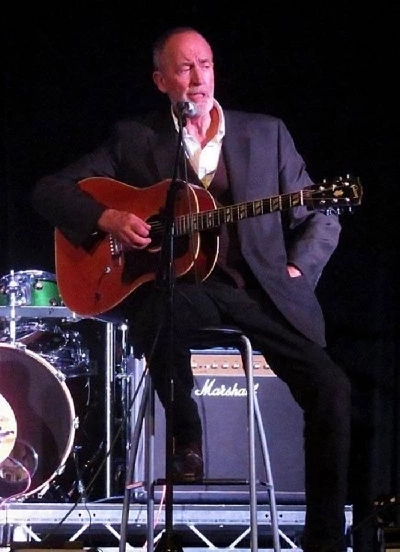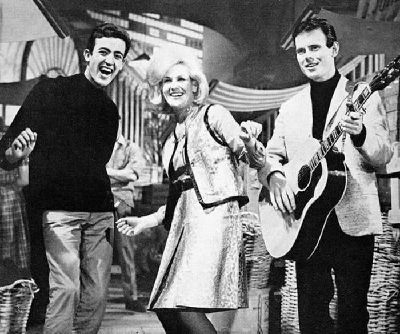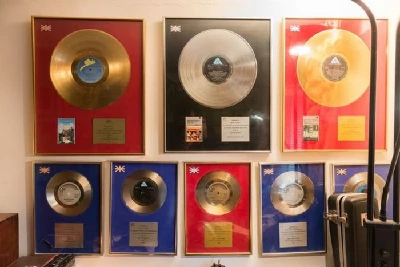published: 5 /
2 /
2016
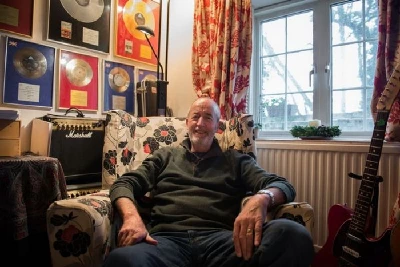
Nick Dent-Robinson speaks to guitarist Mike Hurst about working in early 1960's band the Springfields, which featured the young Dusty Springfield, and his subsequent career as a producer in which he worked with both Marc Bolan and Cat Stevens
Article
For many years, Henley-on-Thames has had more than its fair share of iconic music people living locally. From Beatle George Harrison to the Hollies' Tony Hicks, Deep Purple's Jon Lord and Ian Paice, Jethro Tull's Barrie Barlow, rock veteran Joe Brown and his musical family, Kenny Lynch, Dusty Springfield and many more...but few of them can match the longevity and range of Mike Hurst's career.
Mike, now 73, moved to Henley with his wife Marjorie nearly fifty years ago and he has been performing professionally for over seven decades - from the age of four! Born in Kilburn, North West London, he first took to the boards at the big Metropolitan Variety Theatre in London's Edgware Road, where Mike's mother, a former ballet dancer, had encouraged her only child to sing 'Money Is The Root of All Evil' and 'California Here I Come'. He did so to rapturous applause which he still remembers. This was the start of a career that would see Mike's confidence boosted by meetings with American rock stars Buddy Holly and Eddie Cochran before joining Dusty and her brother Tom in The Springfields. They were the first British band to reach the US Top Twenty, they played New York's Carnegie Hall, recorded in Nashville and they are the UK group whose members have jointly and separately achieved more chart success than any other, apart from the Beatles.
After Dusty Springfield and her brother Tom went their separate ways in late 1963, Mike started his own band - which featured a young Jimmy Page and then Albert Lee as guitarists - before becoming a successful producer. Marc Bolan's first recordings were with Mike who also launched Cat Stevens before producing Showaddywaddy and recording many more top acts from the Move to Manfred Mann, the Australian group New World, Cilla Black, Shakin' Stevens, the Four Tops and Mary Hopkins, plus Mike continued song-writing and performing including on a major tour with Dr. Hook.
More recently Mike has organised theatre-based summer camps for young people, he runs his Rock Masters rock and roll school and he lectures on the history of English-speaking popular music. He also appears with Alice Pitt-Carter and Andy Marlow as the Springfields. It was after a recent Springfields show at Henley's Kenton Theatre that Mike took time to talk about his musical life.
“I was originally Michael Longhurst Pickworth and the change to Mike Hurst was for professional reasons,” Mike began. “We all did it...if you were facing Georgie Fame, Adam Faith, Billy Fury, Marty Wilde, then Pickworth didn't quite work. The name changing was a hangover from the days of musical variety – everybody had a stage name, but the Beatles era was to change all that!
“My mother would have loved to continue her own theatrical career but the economic realities of the 1930s had made that impossible. She'd trained at Italia Conti and for years she ran theatre schools. After she followed us down here to Henley in the late 1960s, her eyes lit on the Kenton Theatre and she soon began her own Henley Children's Theatre Group. The family's connection with the Kenton continues. Following my mother's death in 1981 I oversaw the group until my eldest daughter, Muffin, took it over in 1993. It still thrives.2
“Anyway, my mother was keen for me to perform and until I was eleven or so I enjoyed it. Then I rebelled a bit - I no longer wanted to be on stage with lots of young girl dancers - and my mother accepted I wanted to stop. She just said, 'All right, dear'....and bought me a guitar! I'd already had piano lessons which I'd not enjoyed but I liked the image of myself with a guitar. It was the beginning of skiffle and I admired some of the guys strumming their guitars. There was Lonnie Donegan and there was Elvis, of course, so I really wanted to do that. Initially my fingers bled on the cheap steel guitar strings and, after abandoning it for a while, I kept seeing people on TV playing guitars and tried again. I bought a book called Skiff Rock and learned chord charts and finger placings. Then I was away - me and my guitar!"
“I was at Kilburn Grammar School and was in the school choir but of course the orchestra didn't have guitars in it. My music master - Merlin Thomas, I have never forgotten him - told me he 'saw me' with a cello. He gave me one to play but I was lousy - though, because I could sight-read music, I would mime the tricky bits. Eventually I was caught and kicked out of the orchestra but they kept me in the choir.
“In my later days at school I was still playing guitar at every spare moment and auditioning for all kinds of things. I played again at the Met in Edgware Road - some Elvis songs - and was spotted by the secretary of the official Elvis Presley fan club who invited me to play at the premiere of the Jail House Rock film at the Empire, Leicester Square. 'Elvis will love this,' she told me. I was just fifteen and imagined I'd meet Elvis and open the screening by playing to the whole auditorium, but I was just playing in the lobby and there was no Elvis! I felt a complete fool and they kept asking me to play the same number over and over...'Went to a party in the county jail...' which I did seven times, dying each time. I never forgot that - it was my introduction to the cruel world of auditions and false promises!"
“Later I auditioned for Jack Good's 'Oh Boy' TV show,” Mike continued. “I was unsuccessful but was treated kindly and as I walked out a leather-jacketed American guy with slicked back hair spoke to me. It was Eddie Cochran and he said, 'Don't worry, kid. That's the way it is. You just keep trying,' which was a huge boost, and in 1958 I'd met Buddy Holly at the stage door of Kilburn's Gaumont State Theatre and he was equally positive. I never forgot those things."
“For a while I took a day job in the insurance business with a Lloyd's broker where a cousin worked. I loathed it. Then, without telling me - because she wanted to spare me disappointment, my mother answered an ad in 'The Stage' magazine that said, 'Wanted – young singer/guitarist for established vocal group'. To her surprise, I was invited to audition. It was at the Allegro, a basement cabaret club linked to Quaglino's in St James's. I had to wait in a lobby where I was depressed to see Lonnie Donegan's guitarist was also auditioning. Suddenly a bizarre looking individual appeared - like someone from a Peter Sellers movie. Later I was to learn this was Captain Emlyn Griffiths, the group's manager. He was 6 feet, 3 inches tall with a monocle and military moustache and was wearing a huge overcoat. He said in a rich, fruity tone, stuttering slightly, 'Hello dear boy. You must be Michael Pickworth. Come in, come in' and they asked me to play and sing anything I liked."
"The club was in total darkness apart from the stage with a blinding spotlight shining on it. I sang an Elvis number as I usually did and they asked for another one. I did that and then a different male voice said from the darkness, 'Can you sing something in a foreign language?' and I suddenly thought the whole thing was ridiculous and nothing to do with rock and roll, but my mother's father was Italian and I'd grown up listening to him singing Italian folk songs, so I sang a traditional Neopolitan song called 'La Sorella' and as soon as I'd finished they said, 'Very good. We'll get back to you' which is what they always say at auditions. As I left, for a moment I glimpsed in the gloom of a person with a lot of piled up blonde-white hair who I thought I half recognised. But I didn't realise it was Dusty and I had no clue who the group were. I went home and told my mother, 'Nothing's going to happen there!' and then, within a week, Tom Springfield wrote asking me to join the Springfields, who were already Britain's top vocal group. I just went nuts, completely nuts!”
It was February 1962 and Mike was to replace old Etonian Tim Feild who, with Tom and Dusty, had started the trio in 1960. Mike was just 19, tall and dark and Dusty and Tom hoped he would inject some rock and roll excitement into the Springfields' folksy formula, appealing to younger girls in the audience. The Beatles were already playing Liverpool's Cavern Club to frenzied scenes of teenage hysteria and Dusty and Tom were astute enough to sense a changing mood amongst young music fans. They needed Mike to help ensure their act didn't go stale. And Mike Hurst's arrival proved fortuitous. Almost immediately, The Springfields had their biggest hit, 'Island of Dreams'. More success followed with a US Top Twenty breakthrough in April 1962 with 'Silver Threads and Golden Needles' plus a whirlwind of US opportunities including recording in Nashville and playing New York's Carnegie Hall. Back in the UK the Springfields were voted Best Vocal Group by NME's readers in a poll that made the Beatles 'Most Promising Newcomers'."
“It was a very lucky time for me,” Mike reflects. “From the moment I joined the Springfields, we had one success after another. We worked incredibly hard, rehearsing constantly. Dusty was the creative force and Tom had the business skills and wrote great songs. They were friendly and very fair to me - everything we earned was always split exactly three ways. Though I never felt I knew them well, there was always a distance. Dusty had been convent school educated - wherever the Springfields performed she would seek out a Catholic church - and they'd been quite comfortably raised in High Wycombe. I had no idea back then that Tom and Dusty were both gay. They were naïve times...I just wasn't really aware of such things. Tom loathed live performance, but I always recognised Dusty's power on stage. It was obvious to me she was destined for greater things. She was an iconic figure even then.
“Together the Springfields achieved a lot,” Mike continued. “It was great to be performing in New York where I was thrilled to meet the cast of 'Beyond the Fringe' which was a big Broadway success...Peter Cook, Dudley Moore, Jonathan Miller and Alan Bennett who were big heroes of mine, and in London we appeared at the Royal Command Performance, too, but then it suddenly ended. One day at the Winter Gardens in Blackpool in late 1963, Tom just said 'Why don't we break up?' and Dusty replied, 'Yes, it seems like a good idea'. I thought about it for a moment and meekly said, 'Okay, why not?' and that was it. It was only later I realised that Dusty had her solo career pretty much mapped out - she'd already recorded 'I Only Want to Be With You' and Tom wanted to focus on writing and management. Having enjoyed such quick success with them at a very young age, I assumed my career would just continue to flourish, but it wasn't as easy as that.
“In early 1964 I started a new band - The Methods,” Mike continued. “They were great. I've always been able to pick good guitarists and I asked Jimmy Page to join us...his first recording session was with us - doing 'Any Way That You Want Me' and then, after Jimmy joined the Yardbirds, I recruited Albert Lee. Tony Ashton was on keyboards. We played American country rock - numbers like Hank Locklin's 'Flying South to Dixie' - a full six years before Elton John made this kind of music popular, which was the problem - it was too soon - and in 1964 all anybody wanted was Liverpool!
“By the end of 1964 we weren't making any money at all and I'd spent my earnings from the Springfields days. We needed an income for our young family and Marjorie, my wife, suggested, 'Why don't you produce records?' I said, 'I don't know how', but she asked, 'Well, what did your producer do?' and I thought for a moment and said, 'He read 'The Daily Telegraph' at the control panel, then pressed talk-back and told us thanks for that.' I realised I needed to reinvent myself and could probably do production. I knew top producer Mickie Most as well as Andrew Loog Oldham who had worked with Brian Epstein and then with the Rolling Stones and they passed me some of what they thought was their rubbish work to do, except it wasn't rubbish. I'd soon achieved a hit with Barry St. John and a song I detested called 'Come Away Melinda' and that was the start of it.
“Then Jim Economides, a Californian producer who'd set up shop in London, said I might like to record a kid he'd met - Jim insisted he himself only recorded the big stuff - and that was Marc Bolan! Marc and I did two records together which launched his career. Then a guy walked into my office one day and asked if he could play me some songs. I listened to him and said, 'These are fantastic; what's your name?' He said 'Steven Georgiou but I changed it to Steven Adams and I've changed it again but the newest name is stupid so I'll be changing it once more.' I said, 'So what's your stupid name?' and he replied, 'Cat Stevens.' I told him, 'That's a great name; keep that name,' which he did!”
Initially Mike 3couldn't interest anyone in Cat Stevens and he and his wife were on the point of moving to a job with Vanguard Records in California when Cat Stevens turned up at their door. He ate some bread and jam in Mike's kitchen - which he said was all he could ever afford to eat - and explained that every record company in London had now rejected him. Mike immediately agreed to help. He raised the funds for a recording session and persuaded Decca to give some studio time. They recorded 'I Love My Dog'. Immediately Dick Rowe at Decca was impressed and Sir Edward Lewis, Decca's chairman, agreed to use the record to launch Decca's new Dream label. Cat Stevens's career was launched!
Mike decided to remain in the UK and went on to record a series of household names from Manfred Mann and the Move to the Four Tops, New World, P.P. Arnold, Mary Hopkins, Cilla Black, Spencer Davis, Shakin' Stevens and Showaddywaddy. He also found time to write songs, make solo albums - on which Deep Purple's Jon Lord and Ian Paice played - and perform with his new group, Sundance, plus there was a sell-out tour with Dr. Hook.
Inevitably, over the years, Mike largely lost touch with Dusty and Tom Springfield. All three of them were pursuing their successful but very different careers. When combined, Dusty's huge record sales plus all the chart success of Tom and Mike as artists, writers, producers and managers, make members of The Springfields second only to the Beatles in the total number of hits achieved jointly and individually.
Later in life Dusty Springfield moved to a home near Henley. When Mike heard about this and learned Dusty was seriously ill, he wrote her a letter saying how grateful he had always been to her and Tom for giving him such a great start in the music business. Shortly before she died in 1999, Dusty wrote back a very warm letter to Mike - who has always been pleased they were finally in touch again.
These days Mike enjoys talking to young people and adult audiences about his career and the history of English language folk music, he runs his Rock Masters classes in rock music and song-writing and he has formed a new Springfields group with Andy Marlow and Alice Pitt-Carter which tours UK theatres. Looking back over a long career, what were some of Mike's peak moments?
“I was thrilled to once meet Fred Astaire - who actually demonstrated his smile and elegant walk to me at a bar!” Mike recalled. “This was far more exciting to me than meeting any of the Beatles or Stones. I did actually introduce Paul McCartney to both Jane Asher and David Frost and was lucky enough to meet most of the key figures in the Sixties. I will always regret, though, having once passed up a chance to meet Elvis back in 1971 when he was playing Las Vegas, but probably the most special career moment wasn't The Springfields or Nashville or New York, it was when, as a young producer, my faith in Cat Stevens's second record was rewarded when 'Matthew and Son' became a huge instant hit selling 90,000 before lunch on its launch day. It was so good to feel justified - and right."
“Things have changed hugely in the music business since those days,” Mike reflected. “But one thing is still the same. 99 per cent of people going into entertainment quit; they don't get anywhere, so my advice to anyone is to never stop trying and be flexible and keep on looking for a niche that will enable you to succeed.”
Photographs by Mark Ainsworth
www.markainsworthphotography.com
Band Links:-
http://www.mikehurst.co.uk/
Have a Listen:-
Picture Gallery:-
